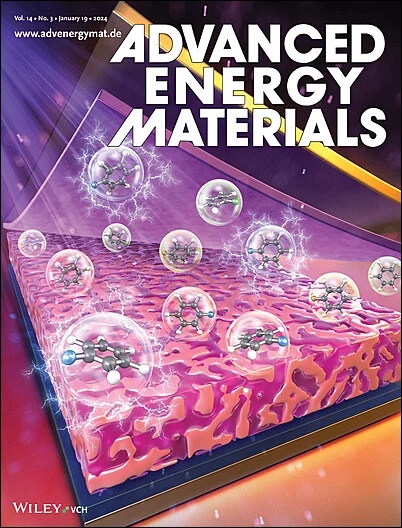可充电电池中电解质和界面的金属有机框架:从液体到固态系统
IF 24.4
1区 材料科学
Q1 CHEMISTRY, PHYSICAL
引用次数: 0
摘要
下一代可充电电池的发展需要多方面的电解质结构,以满足各种苛刻的要求,包括高离子电导率,电化学和热稳定性,结构(或机械)完整性,选择性离子传输和界面兼容性。金属有机框架(mof)由于其不同的化学功能、可调的多孔结构以及与电解质物质的主客体相互作用,已经成为解决这些挑战的独特通用平台。这些特性使mof能够在电池组件中发挥多种作用-从促进选择性离子传输和稳定电极界面到抑制寄生副反应。虽然之前的研究已经探索了mof在孤立应用中的应用,但本综述提供了一个全面和综合的视角,介绍了mof在从液态到固态的全电解质系统中的应用。从早期的离子导体到功能隔膜、中间层、混合电解质和固态导体,mof的演变被详细描述。重点放在设计策略,利用MOF化学调节离子选择性,转移数,界面反应性和机械稳定性。最后,概述了实现mof在实现高性能全固态电池系统方面的潜力的关键挑战和新兴方向。这一统一的概述为指导下一代储能技术中基于MOF的电解质设计提供了一个独特的框架。本文章由计算机程序翻译,如有差异,请以英文原文为准。
Metal‐Organic Frameworks for Electrolytes and Interfaces in Rechargeable Batteries: from Liquid to Solid‐State Systems
The development of next‐generation rechargeable batteries necessitates multi‐faceted electrolyte architectures that can satisfy a wide range of demanding requirements, including high ionic conductivity, electrochemical and thermal stability, structural (or mechanical) integrity, selective ion transport, and interfacial compatibility. Metal‐organic frameworks (MOFs) have emerged as a uniquely versatile platform to address these challenges, owing to their diverse chemical functionalities, tunable porous architectures, and host‐guest interactions with electrolyte species. These features enable MOFs to serve multiple roles across battery components — from facilitating selective ion transport and stabilizing electrode interfaces to suppressing parasitic side reactions. While prior studies have explored MOFs in isolated applications, this review provides a comprehensive and integrative perspective on their use across the full spectrum of electrolyte systems, ranging from liquid to solid‐state. The evolution of MOFs is detailed from early ionic conductors to functional separators, interlayers, hybrid electrolytes, and solid‐state conductors. Emphasis is placed on design strategies that harness MOF chemistry to regulate ion selectivity, transference number, interfacial reactivity, and mechanical stability. Finally, Key challenges and emerging directions are outlined to realize the potential of MOFs in enabling high‐performance, all‐solid‐state battery systems. This unified overview offers a distinct framework for guiding MOF‐based electrolyte design in next‐generation energy storage technologies.
求助全文
通过发布文献求助,成功后即可免费获取论文全文。
去求助
来源期刊

Advanced Energy Materials
CHEMISTRY, PHYSICAL-ENERGY & FUELS
CiteScore
41.90
自引率
4.00%
发文量
889
审稿时长
1.4 months
期刊介绍:
Established in 2011, Advanced Energy Materials is an international, interdisciplinary, English-language journal that focuses on materials used in energy harvesting, conversion, and storage. It is regarded as a top-quality journal alongside Advanced Materials, Advanced Functional Materials, and Small.
With a 2022 Impact Factor of 27.8, Advanced Energy Materials is considered a prime source for the best energy-related research. The journal covers a wide range of topics in energy-related research, including organic and inorganic photovoltaics, batteries and supercapacitors, fuel cells, hydrogen generation and storage, thermoelectrics, water splitting and photocatalysis, solar fuels and thermosolar power, magnetocalorics, and piezoelectronics.
The readership of Advanced Energy Materials includes materials scientists, chemists, physicists, and engineers in both academia and industry. The journal is indexed in various databases and collections, such as Advanced Technologies & Aerospace Database, FIZ Karlsruhe, INSPEC (IET), Science Citation Index Expanded, Technology Collection, and Web of Science, among others.
 求助内容:
求助内容: 应助结果提醒方式:
应助结果提醒方式:


